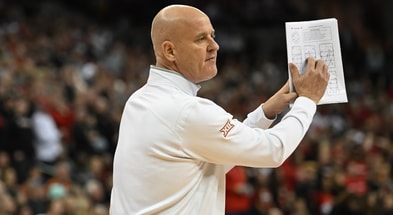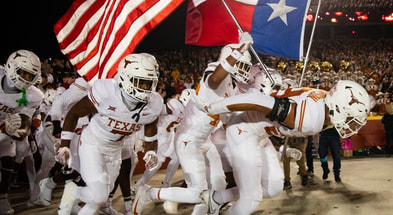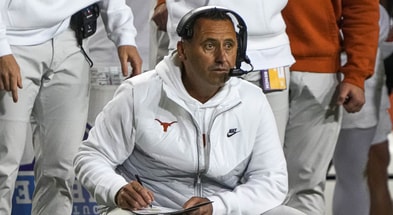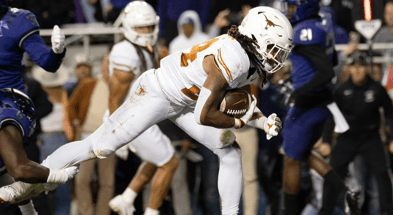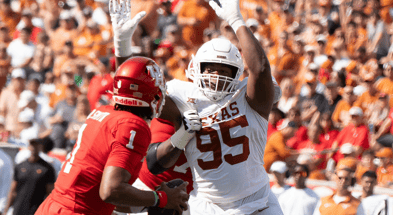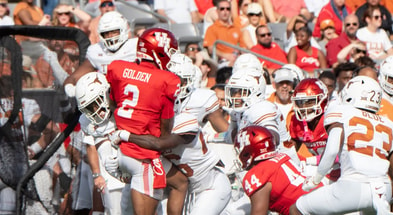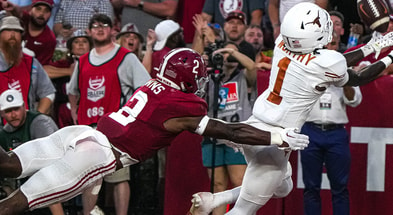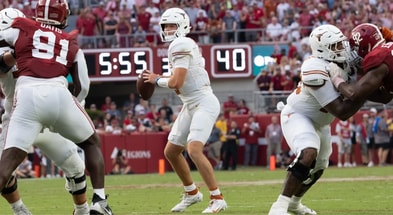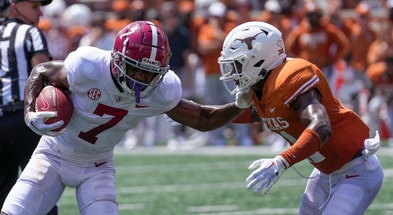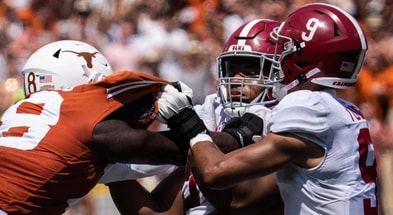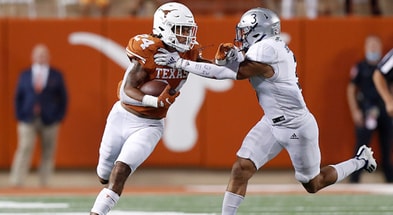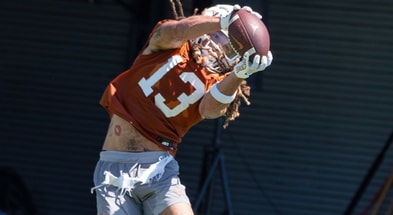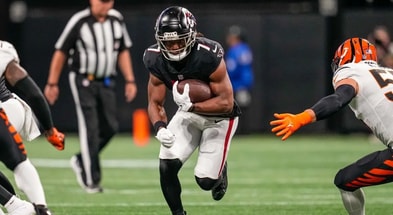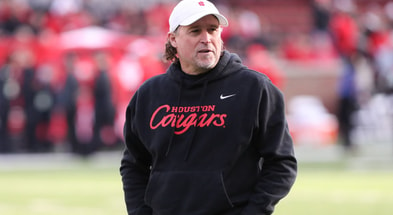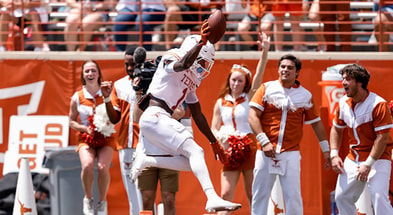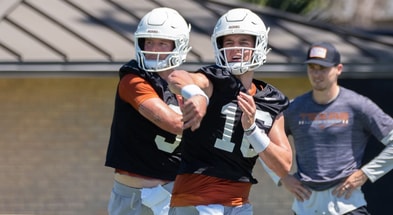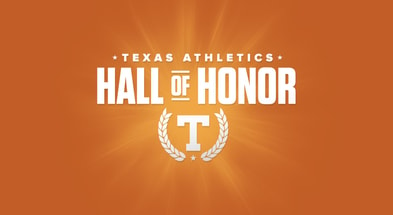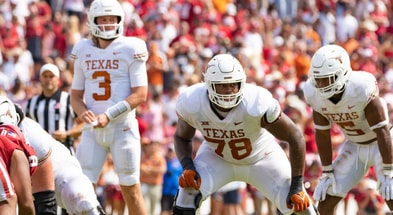Texas Longhorns spring game: Offensive takeaways
A friend of mine recently asked what he missed in the Texas spring game.
“Hang on, I’ll send you some GIFs.”
[Get a FREE 7-day trial of Inside Texas Plus]
I sent him the throw Quinn Ewers made to Isaiah Neyor for a touchdown and then said, “well…that’s probably all you really need to see.”
Ewers showing off big arm talent and hitting another transfer for a touchdown is enough to excite most casual fans. His later RPO shot to Xavier Worthy for another touchdown was additional evidence Texas’ offense could be pretty explosive next season.
There was a lot more to be gleaned from the scrimmage if you’re interested in anything beyond “does Texas have exciting skill talent?” Particularly for anyone willing to go play by play and see which individual matchups took place in this game and where meaningful separation occurred. Those distinctions will tell the story of whether Texas is fun but limited next year or a legitimate Big 12 contender.
Here were a few of the big takeaways evident from more thorough review of the film.
Texas’ perimeter passing could be lethal in 2022
Both Quinn Ewers and Hudson Card showed off a nice knack for hitting Jordan Whittington on slant routes from the slot in this game.
Here’s how this one works.
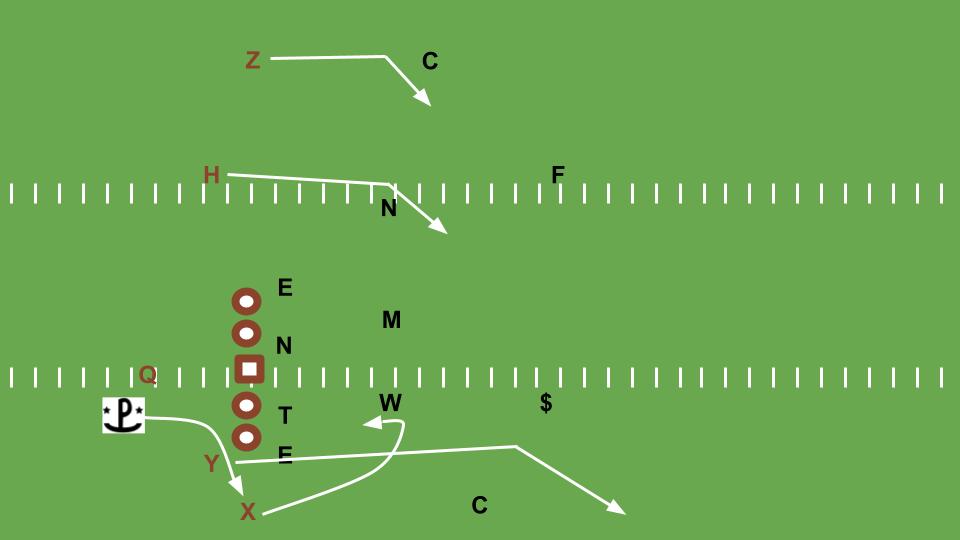
This is a “pick your side” sort of concept. If both safeties are deep, then the quarterback will attack the boundary side and see if he can throw the corner route to the tight end against the safety. If the corner drops back to cover it, the receiver or running back should be open underneath.
If there’s only one deep safety, then the two slants outside are getting 1-on-1s against the nickel and cornerback. The nickel is probably in outside leverage on the slot in a single-high defense so the slant to Jordan Whittington is open, as it was in the two GIFs above. If the nickel plays it inside, the next slant out should be open.
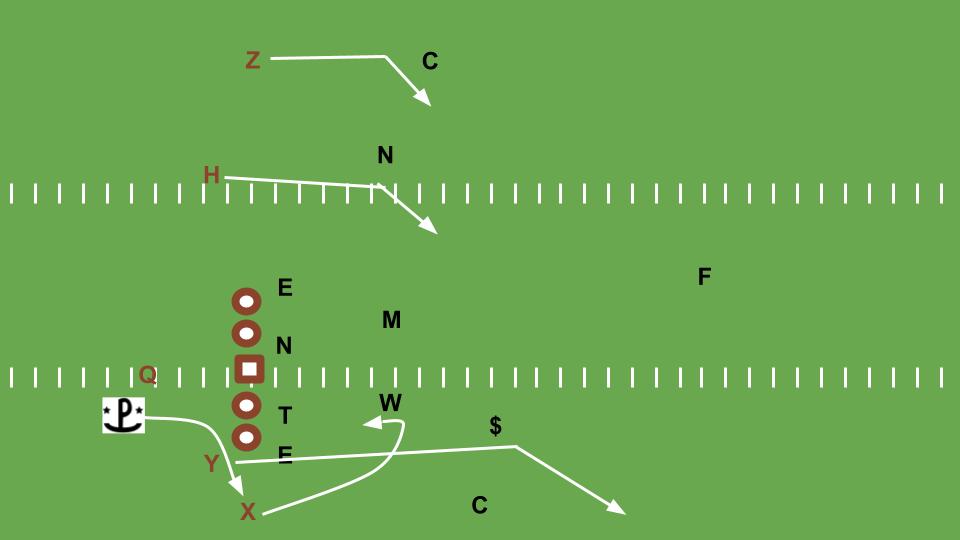
Texas has something they didn’t have a year ago in Ja’Tavion Sanders, a tight end who can go get the ball on deeper patterns. The upshot is the ability to threaten the defense from all five skill positions and scheme favorable matchups. Defenses will typically respond to stress like that by trying to yield matchups outside and away from the quarterback, but with arms like these (particularly Ewers’ obviously) this becomes a less appealing option.
With all of these skill weapons paired with Ewers in particular, Sark has a lot of ways to stress different areas of the field in order to set up easy reads and favorable matchups.
Pass protection is the biggest question
The only limiting factor for Texas in using all five skill players to attack defenses with spacing and routes is whether or not they can protect the quarterback without helping the O-line.
Hayden Conner got the start at left tackle with Andrej Karic out and was reasonably solid. He’s in better shape than a year ago but still a big, massive player who’s hard to run over and he has length to contest an Edge. He didn’t face any proven pass-rushers in this game but insofar as he was tested, he held up pretty well.
He’s solid at setting himself up to take away an initial pass-rush move and he’s thick enough to absorb a bull rush. He had a few near-misses with Ovie Oghoufo around the edge…
…Conner doesn’t have the elite quickness to be a true left tackle, but he’s solid out there and already better than Christian Jones. With better technique and more experience he might be able to match what Derek Kerstetter did a year ago.
There’s a lot of ways to scheme up pass protections to help the O-line on the edge if you have one guy who can reliably hold up on an island in scenarios like the two above without giving up quick pressure. Conner is more likely to be an effective cog at right tackle than an island tackle on the left, but at least Texas’ options are improving. We didn’t get to see Karic, who if he’s ahead of Conner could solidify Texas’ position a little more.
For Texas to be substantially better than a year ago protecting the edge they need further improvement from Conner, a leap from Karic, or for one of the freshmen to infuse instant athleticism.
Run game dynamics
Gunner Helm “hammerhand” is exactly who I thought he’d be. He has good hands (he was more of a receiver than a blocker in high school) but he’s filled out and become a solid blocker. Helm had a few exchanges with Justice Finkley on spread “duo” schemes where he held up pretty well, including on Keilan Robinson’s touchdown which was stripped from him by a lack of review.
Even more encouraging, Sanders is also a very solid blocker now and had a few exchanges 1-on-1 with Alfred Collins he may not have “won” but he didn’t necessarily lose either. Even Jahleel Billingsley showed some willingness to scrap as a blocker. The upshot is that Texas has the ability to get into 12 personnel like last year when they want to and be at least as physical as they were with Jared Wiley and Cade Brewer while also significantly more explosive in the passing game.
Texas wasn’t really thunderous last year in 12 personnel save for against hapless TCU. They still don’t have the personnel to impose their will with a power run game, but they don’t need to in 2022. What matters is whether they can block a good nickel front without relying heavily on the quarterback via RPOs or option reads and whether they can run the ball situationally in short-yardage and the red zone. The prognosis on both is good, particularly when you factor in Bijan Robinson’s involvement and the Wildcat with Roschon Johnson.
This is an offense which will attack opponents from a lot of different directions with packages, tempo, spread, and condensed sets. Opponents lacking flexibility, veteran players, or proper preparation are going to be in for a world of hurt. Their ceiling will depend on how things shake out at left tackle.
